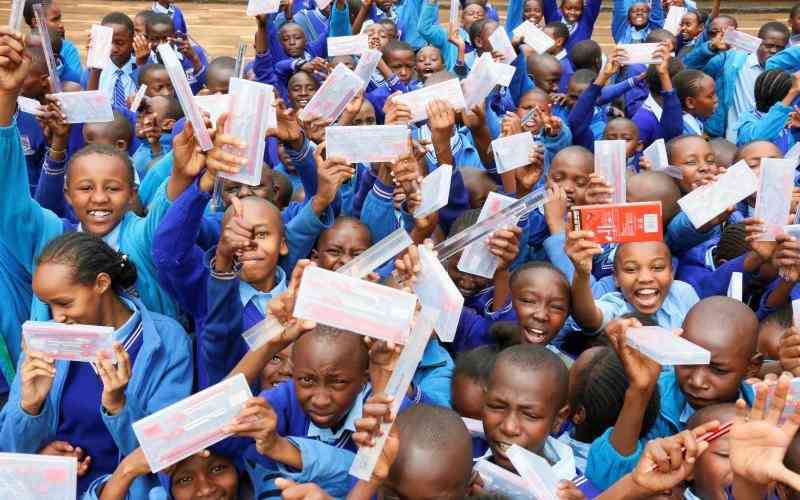By Roy Hezron
A recent report by the United Nations Children’s Fund (UNICEF) has poured cold water on the government’s efforts to promote inclusion in education.
According to the report released in November 2022, 2.5 million primary school children aged between 4 to 17 years have never been to school.
It also shows that children living in hard-to-reach areas are more likely to have not attended school, along with those affected by child marriage, living with disabilities or on the street.
The report also found out that around 3 million children are engaged in child labour in Kenya, though the proportion fell from 34 per cent in 2014 to 13 per cent in 2018.
On adolescents and young people, the findings of the research reveal that secondary school enrollment is at 53 per cent, lagging well behind the primary school enrollment rate of 93 per cent.
Around 6 per cent of Kenyan children have shared naked images of themselves with other internet users while 14 per cent have gone to meet someone they encountered online.
The report also revealed that 4.2 million children were married before 18 years of age, with the rates decreasing from 26 per cent in 2008 to 23 per cent in 2014.
“The number of new HIV infections among adolescents has declined to 5,300 people in 2021. However, they remain as high as 19 per cent in Homa Bay in the west of Kenya,” read the report in part.
The report revealed that violence against children is pervasive. Around one in two young women, representing 46 per cent, and 56 percent of young men have experienced violence as a child.
According to UNICEF, the future of Kenya depends on its children and around half the population of the country are under 18 years, translating to 23.5 million children. Of these, more than half or 12.3 million children are multi-dimensionally poor, meaning that they are deprived of various needs, services and rights.
Generally 16 million Kenyans (30 per cent), including 42 per cent of children, still live on less than US $2 a day, which is approximately Ksh 247.60. Children living in rural areas and those living with disabilities are more vulnerable.
The report also shows that around 83,000 children per year die before reaching the age of five years in Kenya, with the main causes of death being diarrhoea, pneumonia and neonatal complications.
The findings of the report show that children living in the northern counties and urban informal settlements are most likely to die from preventable diseases.
However, these numbers have fallen dramatically over the past thirty years, with the under-five years mortality rate decreasing by 57 per cent between 1990 and 2020. Though, for every 1,000 children born in Kenya, 43 still die before the age of five – and in some counties this rises as high as 109 per 1000 births.
Around 2 million children in Kenya are malnourished. From 2008 to 2014, the report shows that stunting among children under five fell from 35 per cent to 26 per cent while wasting fell from 7 per cent to 4 per cent. However, the percentage has begun to rise again due to drought.
Almost 22 million children, or 86 per cent, were fully vaccinated by the age of one in 2019/20. However, large numbers of unimmunised children have led to outbreaks of measles and polio.
On pregnancy and childbirth, the report shows that around 5,360 women per year, or 0.48 per cent of women, die during pregnancy or childbirth; with maternal mortality ratio declining by 52 per cent since 2000.
In 2021, 79 per cent of births were attended to by skilled health personnel, up from 53 per cent in 2017.
As per the report, around 1.4 per cent of children under the age of five die every year with almost half of these deaths occurring in the 28 days after birth.
According to UNICEF, primary health care and community health can meet up to 90 per cent of children’s health needs.
However, coverage of community health services in the country is 59 per cent while in some counties it is much lower, at just 17 per cent.
In 2020, a series of UNICEF’s County Poverty Profiles and Budget Briefs found that 26 per cent of children were suffering from malnutrition, yet counties were spending less than 1 per cent of their budget on nutrition services for children.






